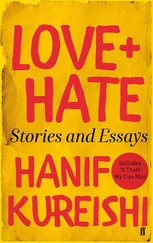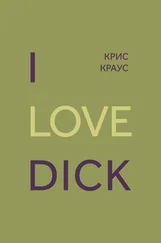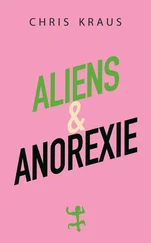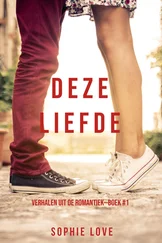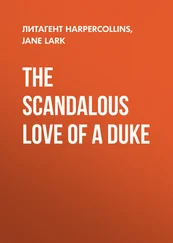WHO GETS TO SPEAK AND WHY?, I wrote last week, IS THE ONLY QUESTION.
Sylvère’s in California for a week and I am writing you from 7th Street and Avenue C, where I am living in the independent poverty I’ve believed since I was 12 to be my birthright. I don’t have to spend my days thinking about money, or dream about it multiplying overnight. I don’t have to work at menial degrading jobs (if you’re a girl menial always turns out to be degrading) or pretend to believe in my career in the third-rate world of experimental film. After building up my husband’s academic/cultural career and investing all his money I have enough to live on so long as I don’t spend too much. And luckily my husband is a very reasonable man.
And I have brilliant friends to talk to (Eileen, Jim and John, Carol, Ann, Yvonne) about writing and ideas but I don’t (will never have?) (this writing is so personal it’s hard to picture it) any other kind of audience. But even so I can’t stop writing even for a day—I’m doing it to save my life. These letters’re the first time I’ve ever tried to talk about ideas because I need to, not just to amuse or entertain.
And now it’s springtime and I want to tell you a little bit about this neighborhood, the world outside: the tiny Spanish gardens with their ramshackle pavilions built on vacant lots, the rutted streets, Adela’s, a Puerto Rican nationalist cafe. There’s a panaderia and a carniceria, bananas cost 15 cents apiece and the white people who live here do so without too much avarice or display of wealth. The panaderia on C and 9th sells cakes of the most amazing brilliant colors. I’ve started wearing underwear that’s green and pink, like Guatemala. And even though there’s sadness wafting through this writing, I’m very happy here.
* * *
I want to talk to you about two paintings in the second room of the exhibition hanging side by side: The Autumn of Central Paris (After Walter Benjamin) 1972/1973 and If Not, Not , a painting about the Holocaust painted several years later in 1975/1976. I question the sense of historiography that installing them this way implies. As if there’s any correlation between chunks of history, past events. As if somehow if we just looked hard enough we could discern some immanent causality between the Autumn Years of Paris in the 1920s, early ’30s and their subsequent annihilation in the War. Wasn’t modernism’s greatest coup to destroy the notion of progression? And yet it still comes back in history books, in dialectical materialism, in the New Age’s recycled Confucianism—the hope that all of us are travelling through concentric rings of knowledge towards some greater truth. And beneath that hope, the biggest lie: that things are getting better . Portentousness is only retrospective.
In Walter Benjamin :
This painting is a dictionary of everything we know about the brilliant cafe world of Paris and Vienna in the ’20s. All the images and tropes we’ve read about this time are closely flanked, jammed up against each other, sliding down from the top left of the frame to the bottom right. History as a Jumble Sale. At the bottom of the pile Kitaj paints red cut-out silhouetted icons of the Communist Revolution: red hammers and red sickles raised by Red Worker’s arms. Right above them, Walter Benjamin sits presiding at a cafe table with a young man turned away from us and a doe-eyed, pretty, serious young woman. She’s one of the few attractive female figures in Kitaj’s work accorded any dignity—most of the pretty girls are naked curving cat-like creatures without any barriers of resistance to the painter’s gaze, and Kitaj’s serious women are mostly totally asexual and middle-aged. I guess he likes to characterize us, as male kikes do, as either sisters, mothers, aunts, or whores. The young woman’s looking up at Walter and she’s listening. Though his mouth is momentarily shut, he’s obviously Holding Forth and he looks terrific in his tinted eyeglasses, waving a cigarette beyond his fleshy sculpted face, so poised. And above these two, at the top left of the frame, the painting cuts to EXT SIDEWALK SAME DAY, a small assortment of EDUCATED JEWS, spanning the spectrum of the middle class transplanted from Europe to Long Island, Skokie and Canarsie: there’re the middle aged, smoking women in big hats and basic makeup (the well-to-do aunts, the Canasta-killers); a shy and sheepfaced guy in cap and shirt-sleeves (the skilled worker, union organizer brother).
But there’s a terrible rupture in this picture, between the world of the cafe, imperfectly protected by its gorgeous gray & mustard zigzagged awning, and the world outside. At the cafe’s outdoor tables, and beyond them out along the street leading to a residential suburb, we see people of a different order, a little more attenuated, brink-ish, all poised in some relation to a nameless future that opens at the top right of the frame.
Seated alone, at a sidewalk table there’s a rakish, yellow coated punk (that’s me!) with shocking bright red hair. This person could be male or female and her/his back is turned towards us, so that s/he can clearly see the future at the top of the frame. And closer to the future there’s a young blonde woman in a big black dress (a big sister or a nanny) holding a small child against her chest. She’s facing us, of course, in order to protect the child.
And what about this future? Dark green poplars line its streets, met by a bird’s-egg blue, cloud strewn sky. This future’s purely European: the sky is borrowed from Magritte, the poplars reek of secrets and opacity of the Alain Resnais and Robbe-Grillet kind. And just like in Magritte, there’s a man walking straight into this future, a generic European man in a shabby cap and overcoat. And like the future, and unlike the paintings of Magritte, this image is both liberating and extremely scary. He’s like the fucked-up heroines in Fassbinder’s Lola or Bette Gordon’s Variety , hobbling on high-heeled shoes towards a fate that the audience has long since guessed but they’re completely unaware of. But unlike the fucked-up heroines, this man seems to have no expectations.
I think the downward rush of images from inside the cafe—history, our collective popular unconscious—performs ironic sabotage in the same way Huskies celebrates, subverts, the atmosphere of Pop Art and the New York School. We’re touched by the nostalgia, seeing Walter at the center of our extended European family, but our smarter selves find greater satisfaction knowing history as we understand it is really just an avalanche of garbage toppling down.
CHICKEN MARENGO
I come over to your house with a bag of groceries in the late afternoon. It’s beautiful California sunlight. I go into your kitchen and start making Chicken Marengo.
(Sautee garlic in olive oil, then add chicken for 20 minutes while cutting up onions, carrots and potatoes. When chicken’s brown, add crushed tomatoes, then the vegetables. Then add bay leaves, pepper…)
It’s an easy kind of scene and you walk in and out. When that’s all done I put it in a pot to stew. I come out and tell you it needs 45 minutes simmering. We go to bed. What else could fill the time as well? Is this the purpose of slow cooking?)
After we have sex we eat chicken marengo, talk awhile.
And then I go…
ROOTLESS COSMOPOLITANS
Lately I’ve been imagining other scenes of beauty too. Tearing down 2nd Avenue last night in my truck, plotting the best grid to beat traffic all the way to 8th & 5th I flash suddenly on parties that I’ve been to in New York, East Hampton: everybody jagged, brilliant, cinematic, all of these personas blurring as the night goes on, drugs, ambition, money, electricity… Do you remember the wretched movie Oliver Stone made about Jim Morrison’s life? According to Oliver, Jim was a wholesome California Boy—cute blonde girlfriend, magic mushrooms, milk & freckles—’til he met the Crazed Kike Witches of New York. The Witches dragged him down with their exotic drugs, their wild parties, their mindfuck demonology. They understood his poetry, though. The Witches are why Jim died of an overdose in the bathtub of a Paris hotel.
Читать дальше
Конец ознакомительного отрывка
Купить книгу

